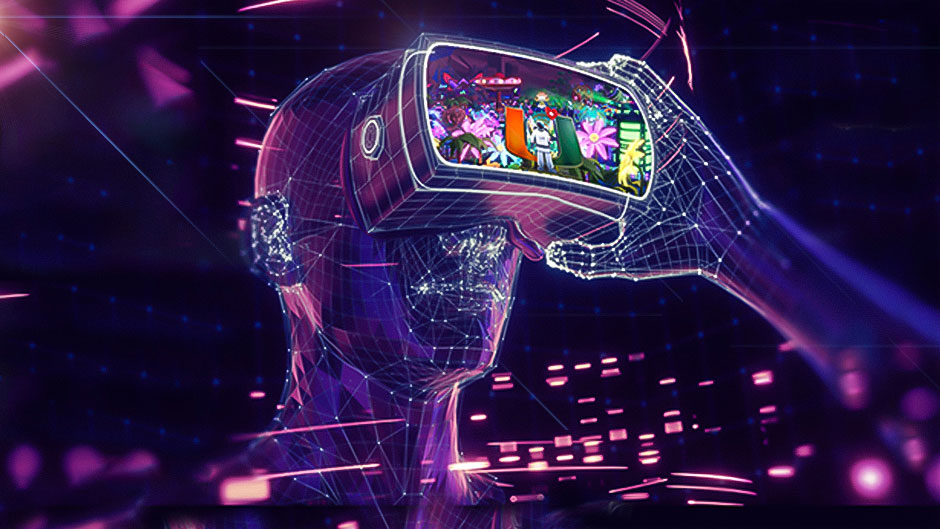Fabrics that can sense the temperature surrounding a person and contract or expand in response. Massive geometric shapes used to combat beach erosion in the Maldives. And weather balloons that can take flight independently, then coalesce over an ocean.
These are just a few of the projects that Skylar Tibbits and his Self-Assembly Lab at the Massachusetts Institute of Technology are working on that challenge our current ideas of what “smart” objects truly are.
“We are interested in trying to embed intelligence into simple materials and their relationship to life,” said Tibbits, an associate professor of design research in MIT’s Department of Architecture. “We want to take wood, metals, plastics, sand, and different rubbers, and advance them into smart systems. The smarter things are, the more devices they have today. We want to make things that are smart—where smart means less and more simple but more agency.”
Tibbits was the keynote speaker for the Smart Cities Miami 2022 conference, hosted by the University of Miami’s School of Architecture and Institute for Data Science and Computing last week. The conference focused on how cities are becoming more digitally connected—a trend hastened by the COVID-19 pandemic.
“This is a forum for our larger community—not just academics, but entrepreneurs and innovators in the public and private sector building one of the fastest-growing cities in North America,” said Rodolphe el-Khoury, dean of the School of Architecture, in reference to growing investments in tech startups and real estate development in Miami and South Florida.
During his lecture, Tibbits gave examples of projects his lab explores, like seeing how wood could be manipulated based on its physical properties. He also explained how his lab is working to help guide materials toward self-assembly, reducing the reliance on humans or robots to construct products, which often adds more layers for mistakes.
“Today, we build robots and machines; tomorrow we build smarter materials and environments,” he added.
In another panel, industry leaders and University faculty members discussed the challenges and opportunities for cities with the growth of new technology. Laércio Albuquerque, vice president of Cisco Latin America, said that while access to the internet was the primary concern in the past, now the mindset must shift to how the technology is used so that advances, such as telehealth, are available to everyone.
“Now is the time to use technology to include society‑and to take care of people,” he said. “We are moving toward 100 billion devices connected, so we need to use this momentum to improve people’s lives.”
Microsoft managing technical director Eumar Dias de Assis said the pandemic forced businesses and cities alike to adopt cloud computing and connectedness, but with that, these entities need to ensure they are securing their technology, as well as the systems now connected to it. He also mentioned the importance of analyzing the data cities collect to help inform decisions.
“We now have sensors throughout cities, but cities need to be able to manage and transform that data into useful information,” Dias de Assis said, adding the tech industry also needs to find ethical ways of collecting and transforming data so it represents every sector of the population.
Translating data into decisions is something Margaret Brisbane, Miami-Dade County’s director of information technology, knows well. In her conference session on the county’s evolving technology infrastructure, she noted that data guides every recommendation she makes.
In a panel about how extended reality (XR) will impact cities, Denise Mendez, a mixed reality software engineer at Microsoft, mentioned a new platform the company is creating called Mesh, which could shift meetings from 2-D video conferences to 3-D virtual reality experiences, where people could attend using their avatar or a digital hologram.
“We want to be the poster child for collaboration, and this technology is ideal for that,” said Mendez, who leads the environmental understanding and data science team.
Another discussion delved into how the building industry is shifting toward smarter ways of operating, like using 3-D printing, so that plans can be completed more efficiently. Luisel Zayas, an architect and digital fabrication expert who founded his own design firm, is exploring 3-D printing to make corals that could protect his native Puerto Rico from hurricanes. Matthew Trimble, director of product development from Chattanooga-based Branch Technology, also talked about reducing waste in construction by harnessing data to guide building designs.
“We are trying to build packets of data around how to make facades with existing building codes and materials in mind, so that we can understand wind loads, climactic and other conditions, and don’t have to customize each project as much,” he said.
Senior computer engineering student Emnet Yebeltal said he enjoyed learning about all the new ideas at the conference, particularly those offered by Tibbits.
“It was cool to see the future of programming materials and how it’s moving toward building things that adapt to the environment,” he said.
Sophomore Rajvi Shah, who is studying geography and sustainable development, was particularly struck by the mention from economics professor David Kelly during one panel that many government regulations barred cities from experimenting with new technology during the COVID-19 pandemic.
“Perhaps if we have a more experimental approach to cities, we may be able to get farther,” she said.
The second day of the conference was programmed in collaboration with Conconcreto, a Colombian construction and engineering company with a recently established base in Miami. Three panels focused on new technologies and their impact on the building industry.

